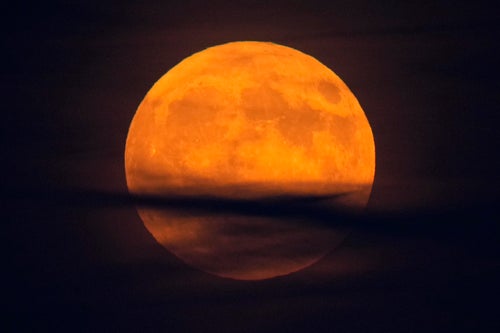

It’s a busy month for stargazers.
First came the “mini-moon” that’s set to stay in our skies ’til 25 November.
Then, the once-in-80,000-years A3 comet made its way into the Northern Hemisphere (and will stay there, hopefully getting increasingly visible, until 30 October).
There’s also the Hunter’s moon, a supermoon which is set to appear for about three days, to look forward to tomorrow.
Starting midday at 12:26pm, October 17, the full moon is supposed to be the brightest one of the year.
But why is it called a “Hunter’s Moon” to begin with?
A “Hunter’s Moon” appears every year
We get 12 full moons a year, or one a month (roughly speaking; Royal Museums Greenwich says it’s every 29.5 days precisely).
“The Moon’s phases and the months of the year are closely linked – the word ‘month’ even takes its root from the word ‘moon’,” they write.
The “Hunter’s Moon” is the name given to the one that appears in October.
The BBC says that this informal nickname was given to the moon because “it occurs at the time of year when hunters would traditionally have been most active – planning for the winter months ahead and hunting animals for food.”
However, you might have noticed that not every month’s moon’s nickname has been in the news.
That’s because this year’s Hunter’s Moon is special ― it’s the closest (at 357,363 km) and largest moon of 2024.
That makes it a “super moon,” which happens because the sattelite’s orbit around Earth isn’t perfectly circular.
That means there are closer and further points in the moon’s path; when the moon reaches a close point, or perigee, it can appear larger.
Supermoons happen when the moon is “within 90% of its closest approach to Earth in a given orbit,” astronomer Fred Espenak says.
Therefore the term “super Hunter Moon” is a bit more accurate for tomorrow’s events.
When and where can I catch the supermoon?
Unlike the A3 comet, there doesn’t seem to be a “best” time to watch October’s super Hunter Moon.
“Just look up [at night]!” Time Out writes.
“As long as you have a clear view of the sky and there aren’t too many clouds, it’ll be hard to miss.”
It’ll rise at 5.56 pm but will be visible throughout tomorrow night, and should stay until Saturday night.